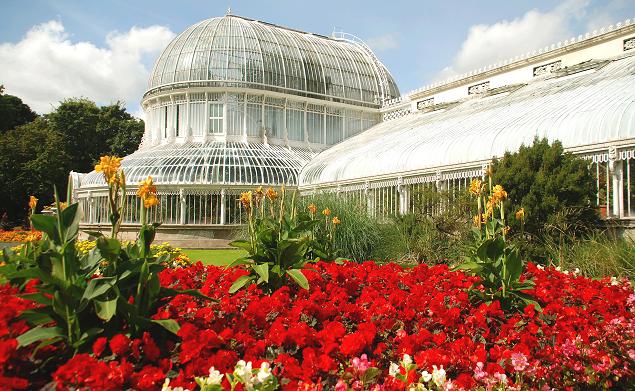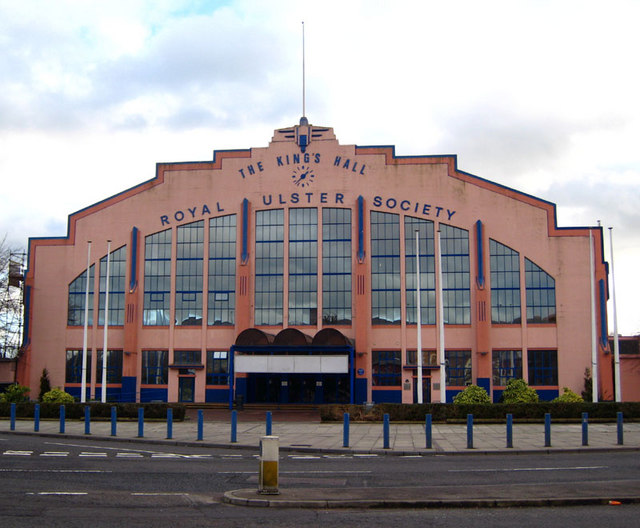|
South Belfast (Assembly Constituency)
Belfast South (, Ulster Scots: ''Bilfawst Sooth'') is a constituency in the Northern Ireland Assembly. The seat was first used for a Northern Ireland-only election for the Northern Ireland Assembly, 1973. It usually shares boundaries with the Belfast South UK Parliament constituency, however the boundaries of the two constituencies were slightly different from 1983 to 1986 and 2010–2011 as the Assembly boundaries had not caught up with Parliamentary boundary changes and from 1996 to 1997 when members of the Northern Ireland Forum had been elected from the newly drawn Parliamentary constituencies but the 51st Parliament of the United Kingdom, elected in 1992 under the 1983–95 constituency boundaries, was still in session. Members were then elected from the constituency to the 1975 Constitutional Convention, the 1982 Assembly, the 1996 Forum and then to the current Assembly from 1998. The constituency is formed from the Belfast City Council districts of Balmoral and Bot ... [...More Info...] [...Related Items...] OR: [Wikipedia] [Google] [Baidu] |
Northern Ireland Assembly
sco-ulster, Norlin Airlan Assemblie , legislature = 7th Northern Ireland Assembly, Seventh Assembly , coa_pic = File:NI_Assembly.svg , coa_res = 250px , house_type = Unicameralism, Unicameral , house1 = , leader1_type = Speaker of the Northern Ireland Assembly, Speaker , leader1 = Alex Maskey , election1 = 11 January 2020 , members = 90 , salary = £55,000 per year + expenses , structure1 = PartyNI2022.svg , structure1_res = 250px , political_groups1 = * Sinn Féin (27) Irish nationalism, N * Democratic Unionist Party, DUP (25) Unionism in the United Kingdom, U * Alliance Party of Northern Ireland, Alliance (17) Cross-community vote#Designations, O * Ulster Unionist Party, UUP (9) Unionism in the United Kingdom, U * Social Democratic and Labour Party, SDLP (8) Irish nationalism, N * Traditional Unionist Voice, TUV (Jim Allister, 1) Un ... [...More Info...] [...Related Items...] OR: [Wikipedia] [Google] [Baidu] |
Ulster Scots Dialects
Ulster Scots or Ulster-Scots (', ga, Albainis Uladh), also known as Ulster Scotch and Ullans, is the dialect of Scots spoken in parts of Ulster in Northern Ireland and the Republic of Ireland.Gregg, R. J. (1972) "The Scotch-Irish Dialect Boundaries in Ulster" in Wakelin, M. F., ''Patterns in the Folk Speech of the British Isles'', London: Athlone PressMacafee, C. (2001) "Lowland Sources of Ulster Scots" in J. M. Kirk & D. P. Ó Baoill, ''Languages Links: the Languages of Scotland and Ireland'', Belfast: Cló Ollscoil na Banríona, p. 121 It is generally considered a dialect or group of dialects of Scots, although groups such as the Ulster-Scots Language Society and Ulster-Scots Academy consider it a language in its own right, and the Ulster-Scots Agency and former Department of Culture, Arts and Leisure have used the term Ulster-Scots language. Some definitions of Ulster Scots may also include Standard English spoken with an Ulster Scots accent.Harris, J. (1985) ''Phonologi ... [...More Info...] [...Related Items...] OR: [Wikipedia] [Google] [Baidu] |
Basil McIvor
William Basil McIvor OBE, PC (NI) (17 June 1928 – 5 November 2004) was an Ulster Unionist politician, barrister and pioneer of integrated education. Early life and education The son of Rev. Frederick McIvor, a Methodist clergyman, McIvor was born in the Tullyhommon, County Fermanagh part of the village of Pettigo, which straddles the Northern Ireland border.Basil McIvor obituary, The Independent, 16 November 2004Basil McIvor obituary, The Daily Telegraph, 26 November 2004, retrieved 3 June 2010 McIvor attended the Methodist College, Belfast and the Queen's University of Belfast and was called to the Bar of Northern Irela ... [...More Info...] [...Related Items...] OR: [Wikipedia] [Google] [Baidu] |
Basil Glass
Basil Glass (21 April 1926 – 30 September 2005) was a politician in Northern Ireland. Born in County Leitrim, Glass studied at Queen's University Belfast; he qualified as a solicitor in 1950 and became a prominent lawyer. He was elected joint treasurer of the New Ulster Movement, with fellow solicitor Oliver Napier, in 1969. The following year, he became the first Chairman of the Alliance Party of Northern Ireland. In 1973, Glass became the President of the Alliance Party, and he was elected to the Northern Ireland Assembly for South Belfast, acting as the party's chief whip in the Assembly. At the October 1974 general election he stood for the Westminster seat of South Belfast, taking second position and almost one quarter of the vote. Glass was again elected to represent South Belfast on the Northern Ireland Constitutional Convention in 1975. In 1976, he became the Alliance Party's deputy leader. In 1977 he was elected to Belfast City Council, a post he held for four years. ... [...More Info...] [...Related Items...] OR: [Wikipedia] [Google] [Baidu] |
Lisburn And Castlereagh
, settlement_type = District , subdivision_type = Sovereign state , subdivision_type1 = Constituent country , subdivision_type2 = , subdivision_type3 = , subdivision_type4 = Status , subdivision_type5 = Admin HQ , subdivision_name = United Kingdom , subdivision_name1 = Northern Ireland , subdivision_name4 = District , subdivision_name5 = Lisburn , government_type = District council , leader_title = Leadership , leader_title1 = , established_title1 = Incorporated , population_density_km2 = auto , blank3_name = Ethnicity , blank3_info = 96.1% White"Main statistics ... [...More Info...] [...Related Items...] OR: [Wikipedia] [Google] [Baidu] |
Lisnasharragh (District Electoral Area)
Lisnasharragh is one of the ten district electoral areas (DEA) in Belfast, Northern Ireland. The district elects six members to Belfast City Council and contains the wards of Cregagh; Hillfoot; Merok; Orangefield; Ravenhill and Rosetta. ARK, accessed 24 May 2014 Lisnasharragh forms part of the Belfast South and Belfast East constituencies for the and . It was created for the [...More Info...] [...Related Items...] OR: [Wikipedia] [Google] [Baidu] |
Titanic (District Electoral Area)
Titanic is one of the ten district electoral areas (DEA) in Belfast, Northern Ireland. Located in the east of the city, the district elects six members to Belfast City Council and contains the wards of Ballymacarrett, Beersbridge, Bloomfield, Connswater, Sydenham and Woodstock. Titanic, along with wards from the neighbouring Ormiston and Lisnasharragh DEAs, together with parts of Lisburn and Castlereagh District Council, form the Belfast East constituency for the Northern Ireland Assembly and UK Parliament. The district was created for the 2014 local elections, largely replacing the Pottinger District Electoral Area, which had existed since 1985. The district takes its name from the city's Titanic Quarter, where the was built. '' |
Botanic (District Electoral Area)
Botanic is one of the ten district electoral areas (DEA) in Belfast, Northern Ireland. The district elects five members to Belfast City Council and contains the wards of Blackstaff; Central; Ormeau; Stranmillis and Windsor. ARK, accessed 24 May 2014 Botanic, along with neighbouring Balmoral, forms the greater part of the Belfast South constituencies for the and |
Balmoral (District Electoral Area)
Balmoral (from the gle, Baile Mhoireil) is the most southern of ten district electoral areas (DEA) in Belfast, Northern Ireland. The district elects five members to Belfast City Council and contains the wards of Belvoir; Finaghy; Malone; Musgrave; Windsor; and Upper Malone. Balmoral, along with neighbouring Botanic, forms the greater part of the Belfast South constituencies for the Northern Ireland Assembly and UK Parliament. The district is bounded to the west and south west by the M1 motorway (Northern Ireland), M1 Motorway, to east and south east by the River Lagan, to the east and north east by the Malone Road and to the north by Belfast City Hospital, Queen's University Belfast and Royal Victoria Hospital, Belfast, Royal Victoria Hospital. The Lisburn Road is the main arterial route through the centre of the district, which also contains a number of public facilities including: the King's Hall, Belfast, King's Hall conference and exhibition centre, the Musgrave Park Hosp ... [...More Info...] [...Related Items...] OR: [Wikipedia] [Google] [Baidu] |
Northern Ireland Assembly, 1982
The Northern Ireland Assembly established in 1982 represented an ultimately unsuccessful attempt to restore the devolution to Northern Ireland which had been suspended 10 years previously. The Assembly was abolished in 1986. Origins The Assembly emerged as a result of initiatives by the then Secretaries of State for Northern Ireland, Humphrey Atkins and James Prior. The first step in this process was a white paper called The Government of Northern Ireland: A Working Paper for a Conference, published on 20 November 1979. This established a conference, attended the following year by the Democratic Unionist Party, the Alliance Party and the Social Democratic and Labour Party (SDLP). (The UUP refused to become involved in protest at a decision to allow discussions on an Irish dimension, discussions which the DUP also boycotted.) Talks between the DUP, Alliance and SDLP took place between 7 January and 24 March 1980, but failed to reach agreement. In July 1980, the British Govern ... [...More Info...] [...Related Items...] OR: [Wikipedia] [Google] [Baidu] |
Northern Ireland Constitutional Convention
The Northern Ireland Constitutional Convention (NICC) was an elected body set up in 1975 by the United Kingdom Labour government of Harold Wilson as an attempt to deal with constitutional issues surrounding the status of Northern Ireland. Formation of the Constitutional Convention The idea for a constitutional convention was first mooted by the Northern Ireland Office in its white paper ''The Northern Ireland Constitution'', published on 4 July 1974. The paper laid out plans for elections to a body which would seek agreement on a political settlement for Northern Ireland. The proposals became law with the enactment of the Northern Ireland Act 1974 later that month. With Lord Chief Justice Robert Lowry appointed to chair the new body, elections were announced for 1 May 1975. The elections were held for the 78-member body using the single transferable vote system of proportional representation in each of Northern Ireland's twelve Westminster constituencies. Initially the body wa ... [...More Info...] [...Related Items...] OR: [Wikipedia] [Google] [Baidu] |
Parliament Of The United Kingdom
The Parliament of the United Kingdom is the supreme legislative body of the United Kingdom, the Crown Dependencies and the British Overseas Territories. It meets at the Palace of Westminster, London. It alone possesses legislative supremacy and thereby ultimate power over all other political bodies in the UK and the overseas territories. Parliament is bicameral but has three parts, consisting of the sovereign ( King-in-Parliament), the House of Lords, and the House of Commons (the primary chamber). In theory, power is officially vested in the King-in-Parliament. However, the Crown normally acts on the advice of the prime minister, and the powers of the House of Lords are limited to only delaying legislation; thus power is ''de facto'' vested in the House of Commons. The House of Commons is an elected chamber with elections to 650 single-member constituencies held at least every five years under the first-past-the-post system. By constitutional convention, all governme ... [...More Info...] [...Related Items...] OR: [Wikipedia] [Google] [Baidu] |




